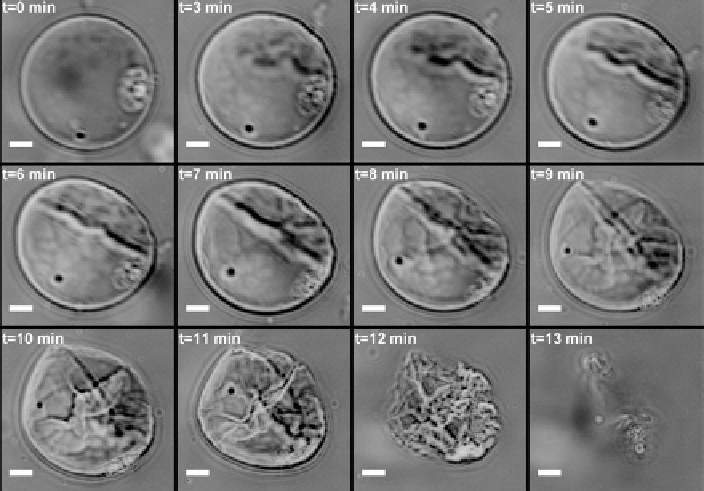Biomedical Engineering Reference
In-Depth Information
Fig. 23
Bright-field microscope images showing the shrinkage and breakage of a PEG(5,000)-
b
-
PLA(5,000) polymersome after an osmotic shock. As a result of water expulsion from its inside,
the polymersome shrinks and buckles. Scale bar is 10 mm. (Reproduced from Shum et al.
2008
)
directly depends on sonication time and intensity. The strong dependence of mem-
brane permeation on ultrasonic and chemical parameters suggests the possibility of
tailoring polymersome features to tune the desired extent of membrane destabiliza-
tion. Even though the exact mechanism of pore formation and release under an ultra-
sonic field need to be elucidated, the results indicate that ultrasound has potential as
a therapeutic tool for drug delivery from polymer vesicles.
4
Concluding Remarks
In Nature, supra-molecular nano or micro-objects formed by the self-assembly of
amphiphilic molecules or macromolecules are omnipresent (e.g. cells, liposomes,
viral capsids etc.) and come in a wide range of shapes, sizes and functions.
Synthetic amphiphilic copolymers are an attractive biomimetic approach that has
been widely used to produce nano or micro assemblies such as polymer vesicles,
polymer micelles, nanofibers and nanotubes. Applications in drug delivery have
driven much of this research. Other opportunities also exist for these polymer
assemblies including use in diagnosis, as nanoreactors and as templates for nano-
material preparation. In this paper, we have focused on polymer vesicle structures,
i.e. polymersomes. Many applications require the ability to selectively and

Search WWH ::

Custom Search